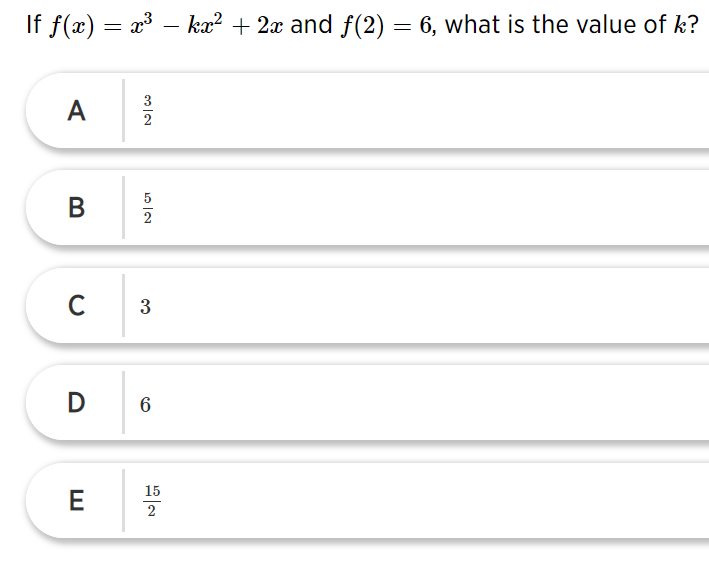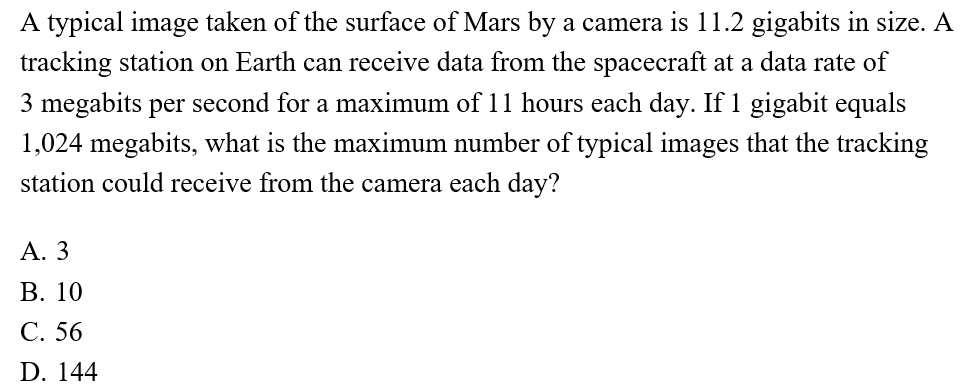ACT Math: How to Use Your Calculator
tl;dr: The ACT has five sections and the math section has 60 multiple-choice questions with 60 minutes to complete them. Be sure to make use of your calculator as a tool and not a crutch. Sample problems and helpful resource links are provided to help you prepare for the ACT Math section. Good luck!
Overview:
The ACT exam has five sections to it. In order, these sections are:
English 📓
Math 🧮
Reading 📖
Science 🔬
Writing ✍️
- The entire exam duration is three hours and thirty-five minutes.
- Each section is timed separately.
- There is a break after the Math section and after the Science section.
- All questions in the Math section are multiple-choice with five choices.
- The ACT Math section has 60 questions to be completed in 60 minutes. The questions fall into one of the three categories:
- Preparing for Higher Math (35 questions)
- 5 Subcategories:
- Number & Quantity (5 questions)
- Algebra (8 questions)
- Functions (8 questions)
- Geometry (8 questions)
- Stats & Probability (6 questions)
- Integrating Essential Skills (25 questions)
- Modeling (22 questions)
- Modeling questions are drawn from the other 2 categories
- The Math portion of the ACT covers material through the end of 11th grade.
- Calculators are allowed on the entire exam, unlike on the SAT.
- Use the calculator as a tool, not a crutch--ie. only when it will save you time and/or help with accuracy.
- Pay attention to given pictures, graphs, etc.
- Before the exam, check this link to make sure your calculator is allowed.
- Before the exam, make sure that you charge your calculator.
- Don’t forget to take your calculator! You cannot borrow or share calculators, and the test site will not provide them.
Sample Problem Section 📚
- Let’s start off with an easy one:

The correct answer is A.
You must understand function notation before a calculator can help. f(2)=6 means that x is replaced with 2 and f(x) is replaced with 6. After this, the nSolve command on the graphing calculator can help simplify the equation quickly and accurately.
2. This problem is considered medium-level difficulty. It requires the learner to know that 1000mg = 1g. (read carefully!)

The correct answer is D.
The first two choices are linear, so since the question says “the population will DOUBLE…”, which implies an exponential answer, eliminate them. A calculator table could be used to find the function, or the two possible choices could be graphed, and the resulting table would confirm that choice D shows population doubling after a time (x-value) increase of 12.
3. The next question is also considered “medium” in difficulty:

The correct answer is D.
n + m ≤ 10… we can equivalently say that n will be 10-m
The total fare will be 3.6n + 4.5m, or 3.6(10-m) + 4.5m = 36 - 3.6m + 4.5m = 36 + 0.9m
Notice this was done fairly quickly without the calculator but could also be done by checking choices, using direct substitution, or graphing inequalities.
4. The final calculator question for this section is considered a medium level of difficulty. It requires the learner to build and interpret a real-world problem using conversion for gigabytes and megabytes (even though this is from an SAT example, it is relevant for the ACT as well).

The correct answer is B.
The values in this problem are large enough to warrant the use of the calculator to ensure speed and accuracy of calculations:
1 hour = 3600 seconds. 1 gigabit = 1024 megabits.
3*3600*11 = 118,800 megabits. Dividing this by 1024 will give 118,800/1024=116.015625 gigabits each day. If each image is 11.2 gigabits, then 116.0156/11.2=10.3585, approximately ten images per day (round down).
Closing 🌟
Congratulations! You’ve made it to the end of “ACT Math - How to use the Calculator” prep 🙌 You should have a better understanding of the Math sections for the ACT©, topic highlights, what you will have to be able to do to succeed, as well as have seen some practice questions that put the concepts in action. Good luck studying for the ACT Math section 👏
Helpful Resource Links

.png)


